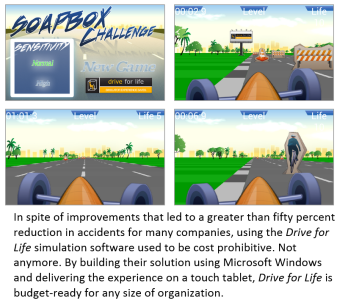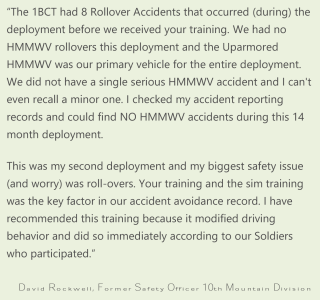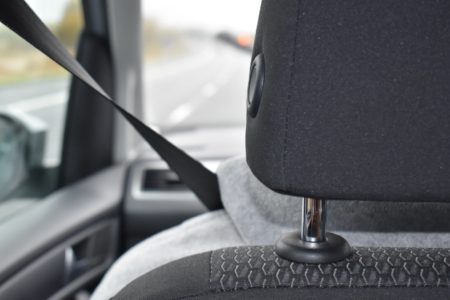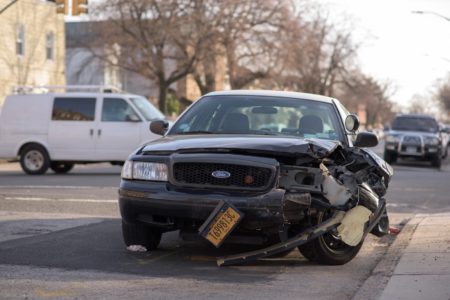Hand-Held Simulator Takes the Wheel
You get the call at midnight. One of your drivers lost control of his vehicle, smashing into two other vehicles and closing a major highway. Thankfully, all injuries are minor, but the lost time, physical damages and potential lawsuits could cost in excess of half a million dollars. You invested in a driver education program that requires annual recertification, but so far you haven’t seen any improvement in performance, and your insurance rates continue to climb. Shareholders are pressuring for a better bottom-line. You need to find a solution that will deliver long-term results.
Training Our Brains to Think Differently
What is really needed is a new way to think about driver training. Research indicates that most accidents may not be the result of driver error per se, but that our brains do not recognize a problem or make the right decision at the critical moment.
Fortunately, touch tablets and simulation software built on Microsoft Windows have the power to impact the way drivers think, and it’s resulting in significant changes in the way we drive.
Drive for Life, known for its on-premise simulators that recreate the driving experience, has developed an app for tablets which brings that same simulator experience to a mobile device. By creating cognitive exercises that are ‘gaming’ in style, it teaches our brains to think differently – to reach a higher level of situational awareness – and the results are nothing short of astounding. One of Canada’s largest insurance companies conducted a test case with the Drive for Life curriculum and simulation exercises: after twelve months, their actuarials indicated a 30% reduction in collisions, and a 40% reduction in insurance costs. As a result, Drive for Life became the first adult/experienced driver training program ever to be given a rate discount for trainees by a Canadian insurance company.
Reducing Driver Fatalities to Zero
The same technology is now being used by EMS, police and fire departments, and even branches of the armed forces. It is a fact that many police services experience higher collision incidents with new officers – this can be as high as 25% of newly recruited drivers getting involved in a collision because they are driving vehicles in high-risk situations. Traditional training does not address the necessary changes in perception or build the experience base fast enough. Simply put, good decision making is at a premium in these situations. After completing the training using Drive for Life’s decision-based simulation program, collision rates dropped to 5%. In the case of one armed forces division, after 5,000 soldiers were trained, fatalities due to rollovers of Humvees and heavy equipment were reduced to zero.
Moving From a Simulator to Simulation on a Tablet
The new application was the brainchild of John Williamson, CEO of Drive for Life, based in Mississauga, Ontario. While their simulators provided a great curriculum, the sheer size, cost and maintenance of the hardware presented drawbacks.
- 20% of users experienced some degree of motion sickness during the 4 hour training session;
- Each simulator cost in excess of $125M;
- Transporting the equipment was difficult or impossible, so trainees were urged to attend the Mississauga facility.
Williamson’s team wanted to put the training into everyone’s hands. Now, with the use of tablets and software built on Microsoft Windows, training can be done anywhere it is needed, and due to mobility and flexibility in appointment times, equipment and personnel do not have to be pulled away from scheduled training to attend urgent situations. 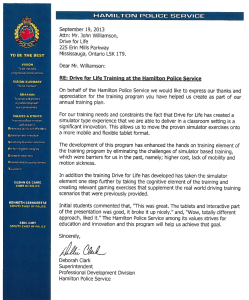
Expansion into New Markets
Drive for Life is now working on expansion, building a more robust technical capacity and marketing their safety-focused software to fleet administrators of taxi & limousine companies, public utilities, the oil and gas industry, healthcare, delivery services and beyond. The product has already been sold to businesses in Egypt and Saudi Arabia, proving that Drive for Life can take the technology to places where full simulators could never go.
“Anyone who has to drive as part of their job can benefit from this software,” says John Williamson, CEO of Drive for Life. “It’s a new approach to driver training, and it’s helping people make better decisions as they navigate roads anywhere in the world.”
The Drive for Life is recognized by the PSHSA (Public Services Health & Safety Association), and endorsed by a number of Police Services, along with Royal Sun Alliance and Aviva insurance companies. For more information, go to www.driveforlife.com

